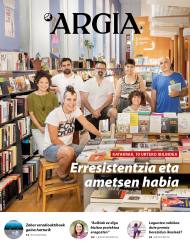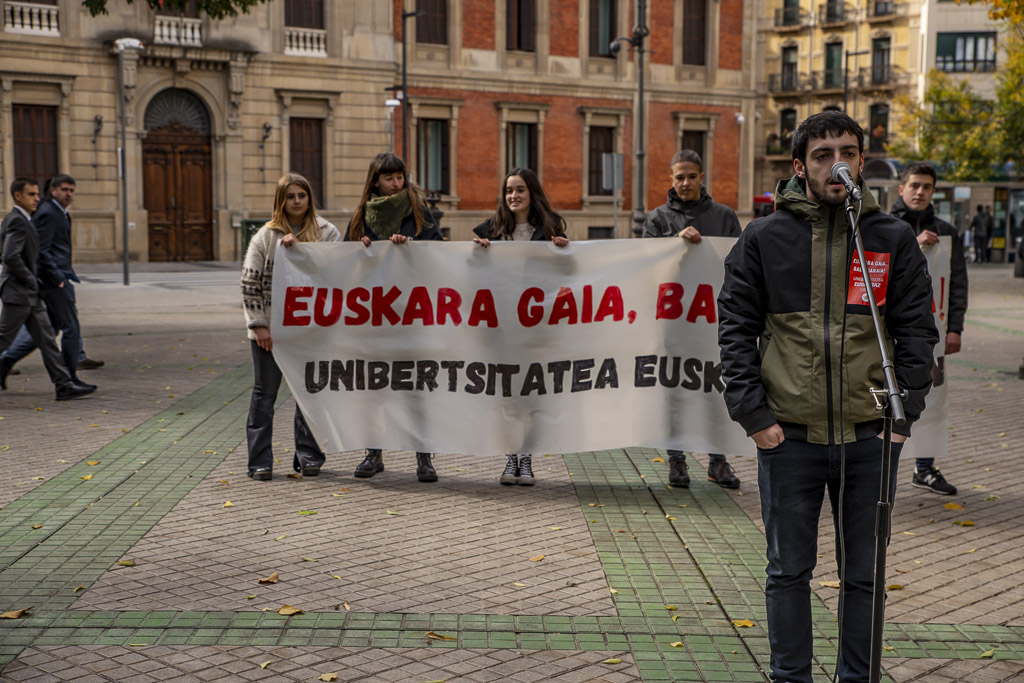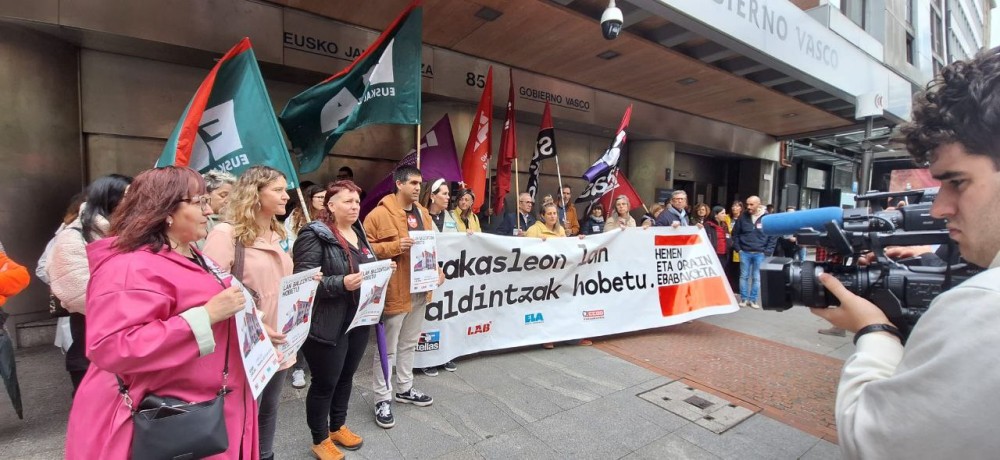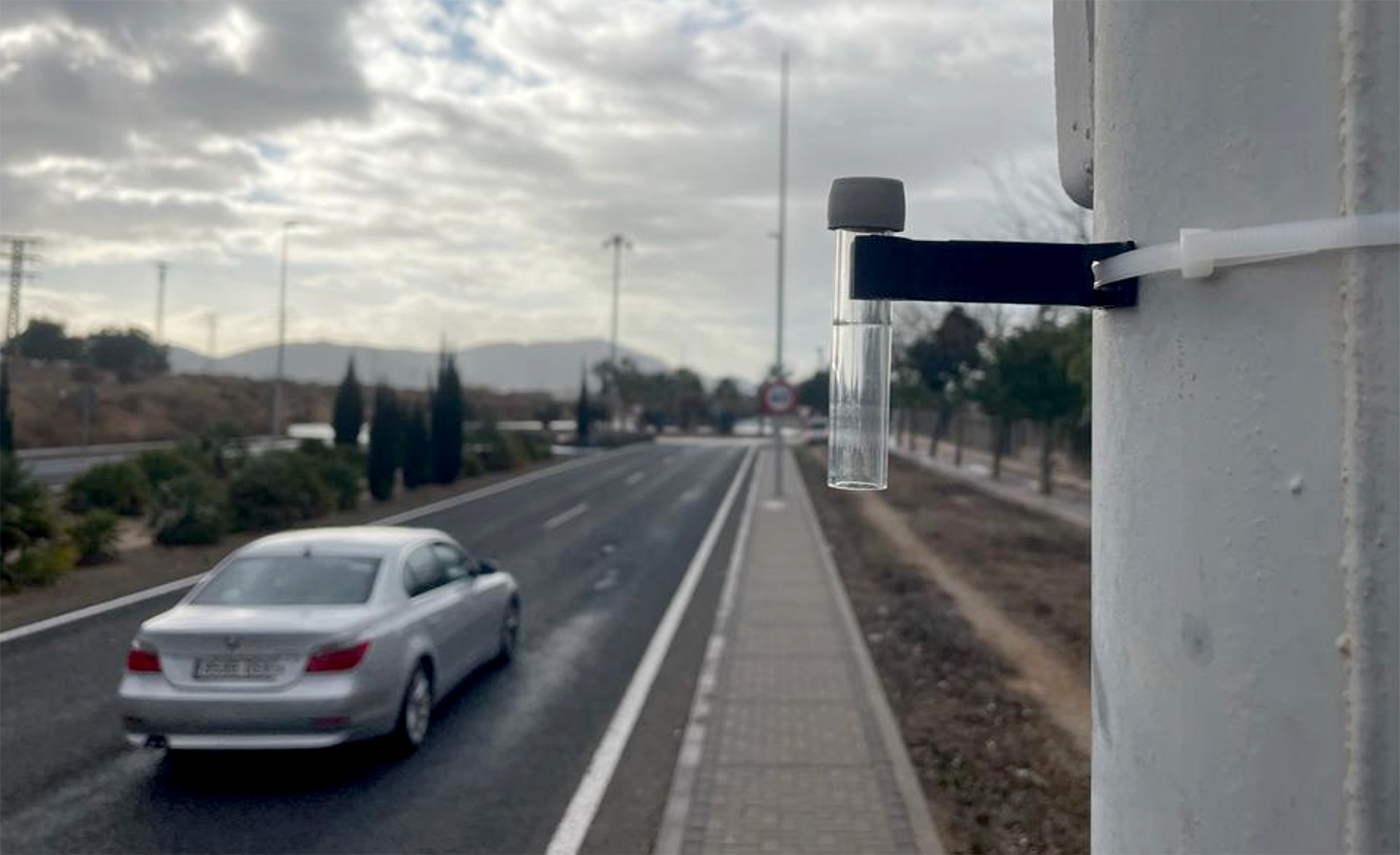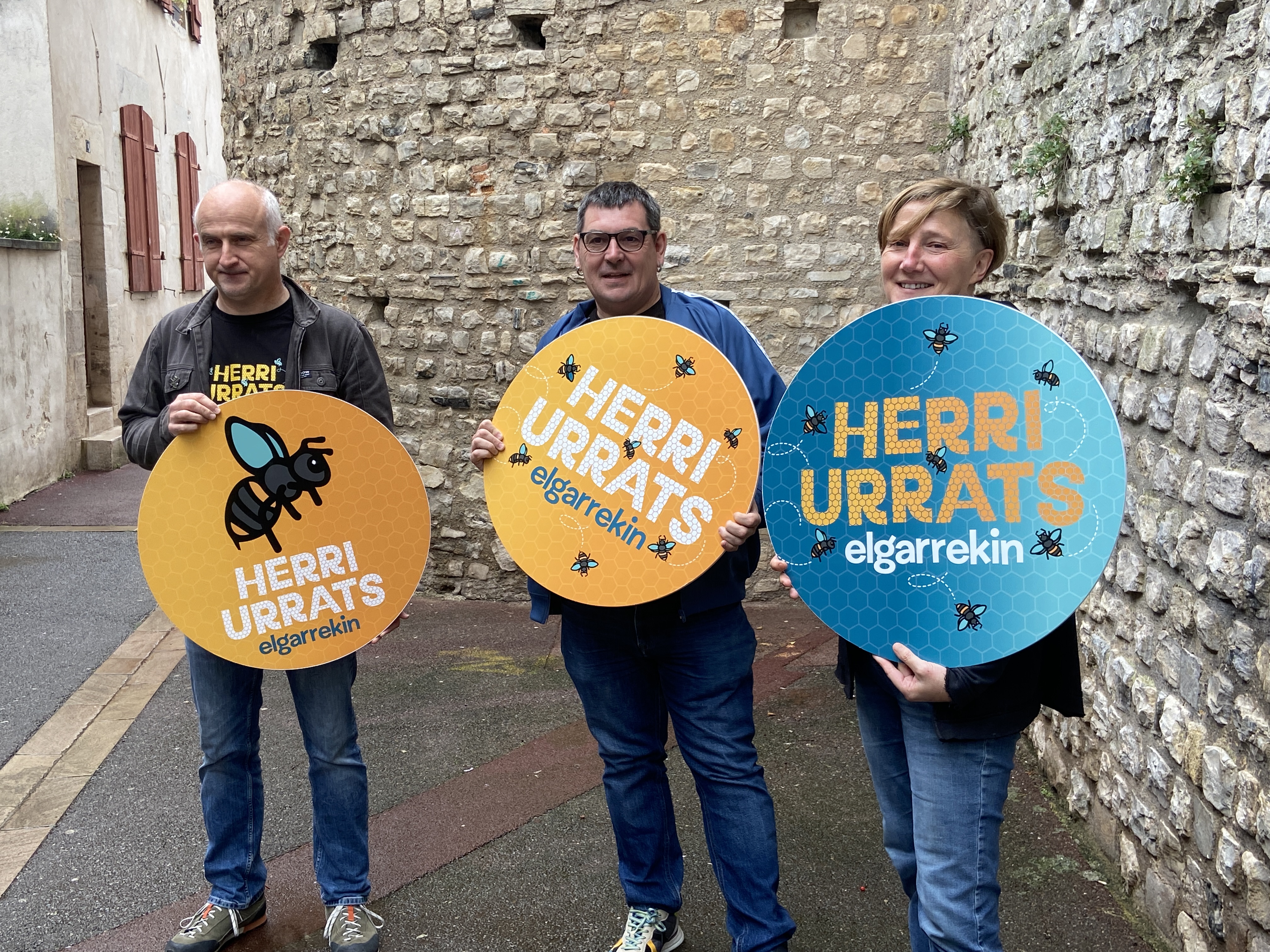Lack of resources to meet students with special needs?
- The Education Counselor announced in June that at CAPV the number of students with special needs has increased by 60% in the last decade and that 65 professors (PT) of Therapeutic Pedagogy will be incorporated for the course that has just begun. Educators and PTs addressing these children have been asked, who have drawn many student profiles from the map (who is not on the map is not educated or PT), who are charging tutors and that the decline of the Berritzegunes has influenced the diagnoses.
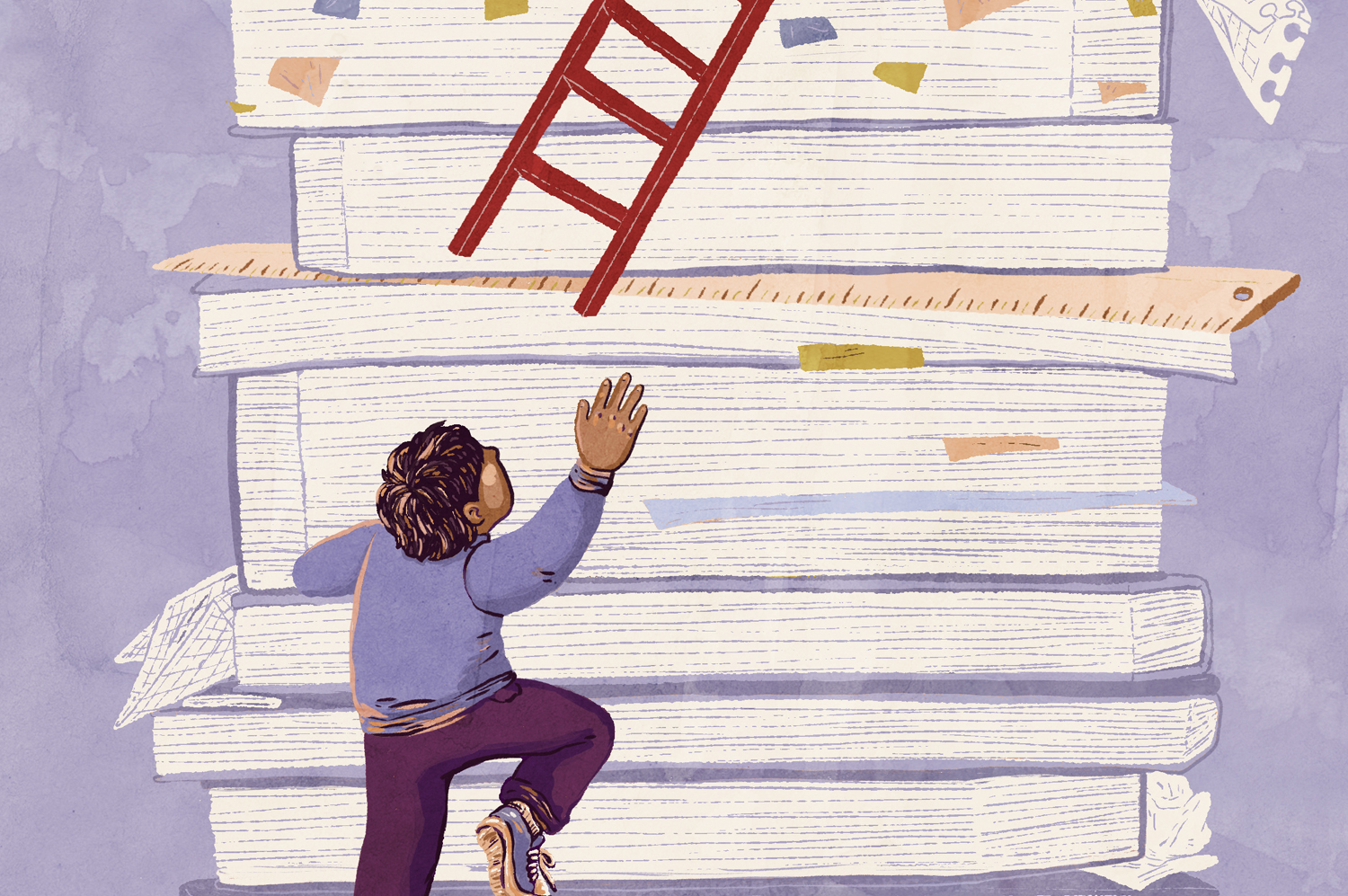
From 14,200 students diagnosed in 2012 with special educational needs, in 2021 they have passed to 23,800 students, a significant data provided by Education Advisor Jokin Bildarratz. Students diagnosed with special needs are included in the so-called map of the center and their presence means that, to the extent that this student needs more attention, a personal resource (educator and/or PT) will be assigned to help in the learning itinerary and in the classroom, adapt the curriculum to their needs, etc. Well, for a few years, only the most urgent needs (disabilities, serious confusion…) have been left on the map, and the rest, the so-called students who need specific support, do not have additional resources, the tutor (in fact the cloister) must respond to the needs of these students and adapt the material and learning process to the reality of each. Among the students who need specific support are, for example, those who have learning difficulties, dyslexia, etc., those who lack attention, problems with attitude, those who have a high intellectual capacity, those who have joined the educational system late, those who live in a complex context... It must be taken into account that the number of these students increases considerably, according to the educators and PT interviewed for this report.
Conclusion? In the classroom of 25 students, the tutor (cloister) must respond to the multiple needs and to a growing number of students who need special attention in the classroom, must increasingly adapt the learning processes and the interlocutors are clear that, on the one hand, the burden is evident, the teachers often do not adequately attend to all, and on the other hand, the great training needs are not met. What happens in practice? One of the PTs tells us that many teachers turn to PTs to help them, and a trend: that those students enter the classroom where there is some PTs to help them (but the PTs are not in principle to help them, but to help the tutor with students with special needs). This PT also has a clear suspicion that they will increasingly include fewer special needs on the map and will move more to specific assistance outside the intervention of educators and PT. “The disappearance of the support of these students is a tremendous setback,” says the delegation of the educators of STEILAS; the tutors will try, as far as possible, to give the corresponding help and make the adaptations, but they will hardly come with the workload they have.”
Steilas: "The disappearance of the support of these students is a great setback, the tutors will try as far as possible, but they will hardly come with their workload"
Fewer berritzegunes, fewer diagnostics, the
Berritzegunes provide zonal advisory and innovation service to the public centres of the CAV, support the centres, but the Basque Government has decided to transform the Berritzegunes, centralize them, merge them and reduce them in number. Instead, they have created a figure in the centres that will take care of innovation: BeAtarra. The fact is that the Berritzegunes also have another important function, which is to respond to special needs, and the consequence has been immediate: With fewer berritzegunes and staff, the special needs service provided to centres is reduced.
The child is first observed by the center, and if special needs are detected, it is observed by the Adviser of Berritzegune, defines the profile and access the map with its approval. However, the PTs interviewed indicated that the reduction of the Berritzegunes has resulted in a significant reduction in the presence of the Berritzegune advisers: “Until a couple of years ago, the referent of the Berritzegune came every fifteen days, and the meetings had continuity, during the last course we have only made two meetings, one at the beginning as a presentation and one towards March. In the second meeting, diagnoses were made very quickly,” says one of the participants. It should be noted that the clinical diagnosis is made by medical professionals (psychiatrists, neurologists…) and that the diagnosis made to the student in the center and in the Berritzegune has to do with the educational setting, to properly identify their weaknesses and strengths and to develop a suitable educational plan.
This has left two results. On the one hand, school advisers have been given greater autonomy and responsibility for observation and diagnosis. If a small filter had passed before, the observation you have to make is now much bigger, and some and others have warned that this will also increase the workload. One PT tells us that the counselors of the center are able to make a proper diagnosis, another believes that in general they are not as specialized as the professional psychologists of the Berritzegune, which can influence the diagnosis made. Even, ELA warns that the advisors of the centres do not have sufficient training: “The Department of Education can aspire to empower school counsellors in this task, but for the time being and on the basis of what we know, the Department is not creating the conditions for these counsellors to be able to provide the necessary format and tools.”
On the other hand, in all centers there are often long observation lists waiting for approval from the Berritzegune professional. The transformation of the Berritzegunes has slowed the pace, reduced the meetings and without their diagnosis, the student does not enter the map. And without going into the map, resources don't come. However, the Basque Government is reinforcing the trend towards the distribution of resources according to the number and ratio of students, and in this sense, in addition to educators and PT, which due to the number of students correspond to the center, the interlocutors ask that account be taken of the vulnerability index they have recently implemented, so that extra resources are put in centers with a high vulnerability rate.
Professor PT: "Until a couple of years ago, the referent of the Berritzegune came every fifteen days, and the meetings had continuity, we have only held two meetings throughout the last course"
PT and educators, are sufficient resources allocated to this student body?
Students with special needs on the map can count on educators and educators to receive the support needed in the school or PT faculty to intervene in the methodological and curricular adaptations and aids associated with the learning process. It is best to work together and coordinate educators, PT, tutors, etc.
“In our center, last year we had two and a half PT, and this year, with the same number of students, we have two PT. Have you increased a total of 65 PT? There will be, but it does not fit me, in our environment the resources have not increased and in any case they have decreased, or they have taken them out of one school and put them in another”, says one of the PTs interviewed, and the feeling of the rest of the interlocutors is similar, but we have to look at sensations, data, and in the allocation of 65 more PT, also considers that “the increase in resources is very scarce”. According to the information the union has, in the PT and educators offered this course, the full-time jobs have been reduced and the partial ones have been increased: “That is, although there are more workers, the number is very low compared to the additional number of pupils in special need, and they are also part-time, so the Department of Education is precarious of employment rather than creating jobs.”
For STEILAS it is not enough either, “at all.” LAB is more positive: they stress that the figures of advisors, advisors and PT have been strengthened by the struggle and negotiations, and that educators have increased the number of jobs and will be able to stabilize all "soon".
In spite of everything, the interlocutors have stressed that the distribution of resources takes place at the beginning of the course and that once the course is started there is no flexibility to change these resources. This means that the center, depending on its resources, performs a tetris, and if then the student who joins in the middle of the course needs it (and often needs it the one who joins in the middle of the course), often cannot get additional resources, so you have to remake the tetris previously done, reducing it somewhere.
STEILAS also puts on the table the professional timeslot with the student, understanding that the number of hours is determined “always below”: “The hours of attention to receive for each student are not enough”. For pupils with special needs, the intensity is used as an indicator and each intensity sets an interval of hours of attention (not a given number of hours): “The intensities have not been reviewed for many years and cover broad slots where the auxiliary tends to go below.”
They also explain what happens on many occasions: although PT is the best work in the ordinary classroom (for inclusion, among other things), because the student has very specific needs or because that PT does not attend to all the students who arrive, it can take the students who need it in small groups, and if each has a personalized attention of three hours, it caters to the three exclusive ones at a time, so that they really do not share it.
According to the level of
studies, LAB has reminded that students in need of support have less resources from Compulsory Secondary Education. As studies progress, in short, it is sought that these students are increasingly autonomous to develop autonomy, but for all the equation it is not worth. We recently demonstrated in ARGIA that the student with cerebral palsy and disability 87% had half of the help he had until that moment when he took the leap to vocational training claiming that it would be beneficial for the development of autonomy, but it is not possible to advance with half of the aid.
At STEILAS, they complain about the same thing with the practices: “In the case of deaf students, for example, when going to the second Vocational Training course they go to the internships and it seems that when they are in the workshop they do not need any help, the Department of Education sends home the Sign Language Interpreter and leaves the students without interpreters towards March.”
Educators who become PT The representative of STEILAS underlines the changing situation that educators are experiencing: to assign the necessary educators in a
course, first strip the workers with a stable position, that is, the List of Jobs, and after dividing all the members of the List into centers, hires the missing educators for a course, saying that they are “specific needs”. Due to the fact that the Spanish Labor Reform does not allow such contracts, last year they had to include more workers in the List of Jobs, but due to their needs, they formalized six months of contract with the formula of Accumulation. Thus, around April-May, when the contracts were concluded, the Basque Government offered them to extend the contracts, but the educators requested not to extend them to stabilize the jobs, renouncing it and hiring the PT as a solution: “There are a lot of people waiting on the job exchange, a lot of educators, but instead of solving the problem they have chosen to hire the PT to do the work of the educators.”
The conversation ends firmly: “The situation of students with special needs is serious, as if the necessary resources are not allocated it is very difficult to advance. Often, instead of receiving help, they are hindered and the educational and equality rights are violated.” A few years ago we wrote in ARGIA about the deficiencies that still remain on the path of a truly inclusive school, in the educational report that does not satisfy students with special needs. The article was dedicated to a reality that hides behind this whole issue: an endless struggle that many families must repeat every course so that their child receives the support and attention they need.
The Department of Education reported on diagnostic evaluations in February: He talked about the mid-stage of 2023 and the end-stage of 2024. Since the disastrous results would show that we have a structural problem, the department decided to comply with the procedure (publish... [+]
I found the old news on the LIGHT ephemeris channel: On April 23, 1918, Irish workers went on a general strike in I. Against forced recruitment for World War II. Thanks to the response of the workers and independence supporters, Britain was forced to retreat.
We don’t have to... [+]









